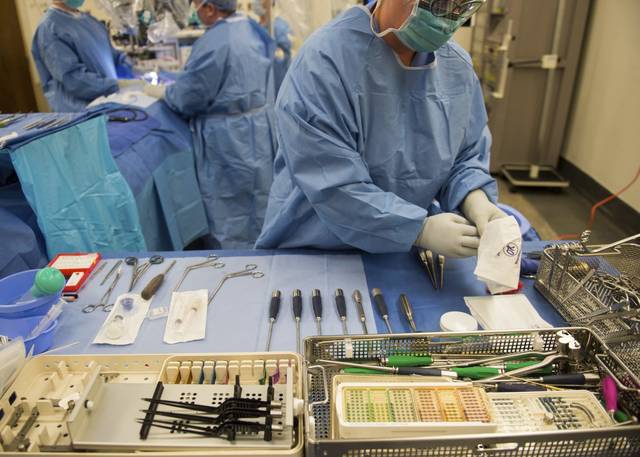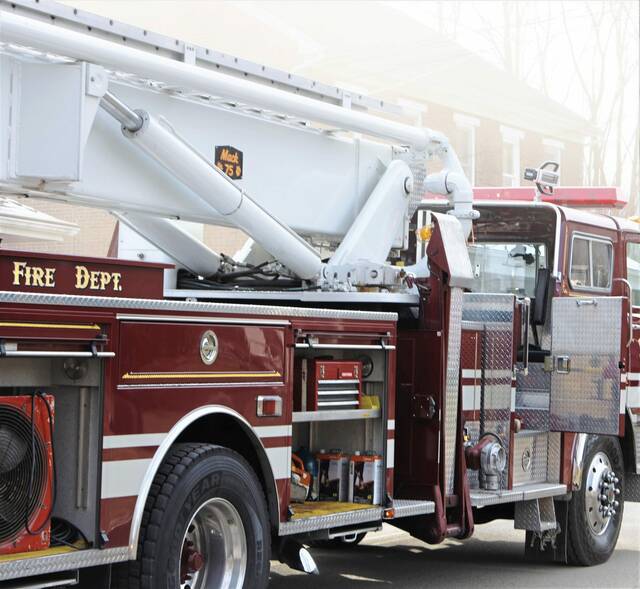A new federal mandate could make it a little easier for health care consumers to shop around, or at least get a clearer idea of what hospitals charge.
A rule by the Centers for Medicare & Medicaid Services that took effect Tuesday requires all hospitals to publish standard price lists for thousands of types of procedures, tests, pharmaceutical drugs and medical supplies.
For the first time, hospitals must not only maintain updated “chargemaster” price lists — previously available upon request, often requiring an in-person appointment — but also post searchable versions of the data annually online and share it with consumers.
The price lists include the full standard charge by each hospital.
They do not reflect out-of-pocket patient costs, the average cost of individual procedures or items or negotiated discounts and fee schedules with government or third-party insurers.
“It’s a good starting point to ask questions,” said Jolene Calla, vice president of health care finance and insurance for the Hospital and Healthsystem Association of Pennsylvania. “We want to get meaningful information into the hands of the consumers so that they can make the best decisions for their health care needs.”
Calla said the federal goal of increasing transparency in hospital pricing is in line with broader industry goals, but she emphasized the need for a second, “more important” step: Patients should contact providers and each hospital’s business offices to determine the true cost of a procedure or test.
Not so user-friendly, yet
Each hospital can post the chargemaster list in its own format, making it difficult and time-consuming to scan the documents for common keywords or to make apples-to-apples comparisons among hospitals.
In some cases, the same description for a service or procedure varies in price at the same hospital by hundreds to thousands of dollars without any explanation of why.
Acronyms and internal health system codes and identification numbers provide little clarity to thousands of lines of itemized prices, with little to no glossary of terms or codes.
Because the format is different for each hospital system, it’s difficult to draw quick conclusions and comparisons — which is a stated goal of the price transparency rule.
“This is really just a first step,” Calla said. “This is phase one of information coming out, so I expect that as hospitals work with patients and get additional feedback, you will see it evolve to where it gets even more user-friendly and easier to understand.”
Some price lists went public earlier than others. UPMC on Wednesday night posted price lists for most of its hospitals in Western Pennsylvania after publishing chargemasters for several hospitals in northwestern and Central Pennsylvania earlier.
Chargemasters already had been posted to hospital websites for regional systems such as Excela Health and Allegheny Health Network.
A cursory review shows charges set by hospitals for what appear to be similar procedures vary across the region.
Hospitals question value
Multiple hospital system spokespersons said they valued transparency while downplaying the value of publishing the pricing lists. They questioned the limitations of the available data and what they do and don’t reveal to prospective patients.
“It is highly unlikely that this will provide any meaningful information that would be useful for patients,” Manko said. “It is important to understand that the standard charge is not the amount that a patient is expected to pay for receiving health care services. A patient’s financial obligation is determined by many factors, including insurance coverage and benefit plan limits.”
AHN Chief Financial Officer Jeffrey Crudele said the standard charge reflects a complex set of factors, including the types and scope of services and resources available at a hospital and the relative complexity of the patient issues that are frequently treated at those hospitals.
“Particularly, trauma hospitals tend to provide care for more complex patients, so sometimes there are higher levels of charges,” Crudele said. “There’s a myriad of factors like that.”
The standard charges do not account for how much a patient will pay out of pocket, which depends on their insurance coverage and other individual circumstances.
Further, the charges may not reflect the average costs of such procedures nor what hospitals receive in full for the procedures, with those costs subject to fee schedules, negotiated discounts and contracts with third-party insurers.
“As a result, without context, the chargemaster prices may be of limited value to patients,” AHN said in a statement.
Hospital systems officials urged consumers to call their business offices and financial counselors directly to discuss their specific cases and needs in more detail or make use of their in-house cost calculators.
“Rather than having consumers sort of wade through this on their own, we really want to give our consumers personalized assistance,” Crudele said.
Natasha Lindstrom is a Tribune-Review staff writer. You can contact Natasha at 412-380-8514, nlindstrom@tribweb.com or via Twitter @NewsNatasha.








